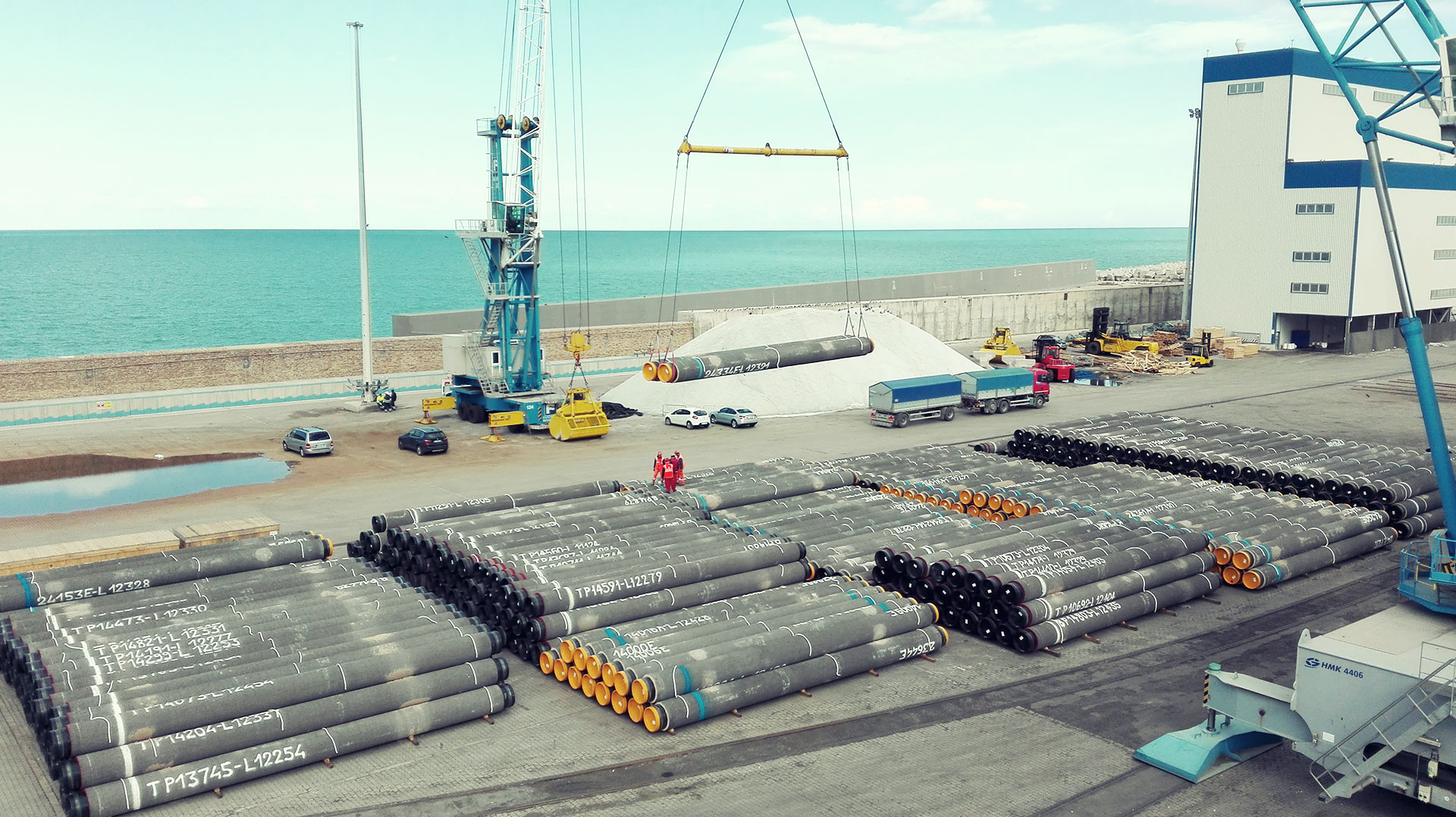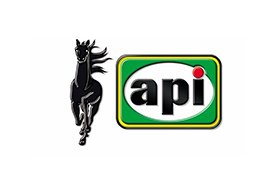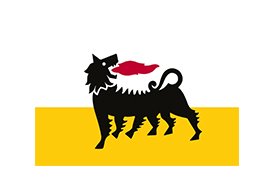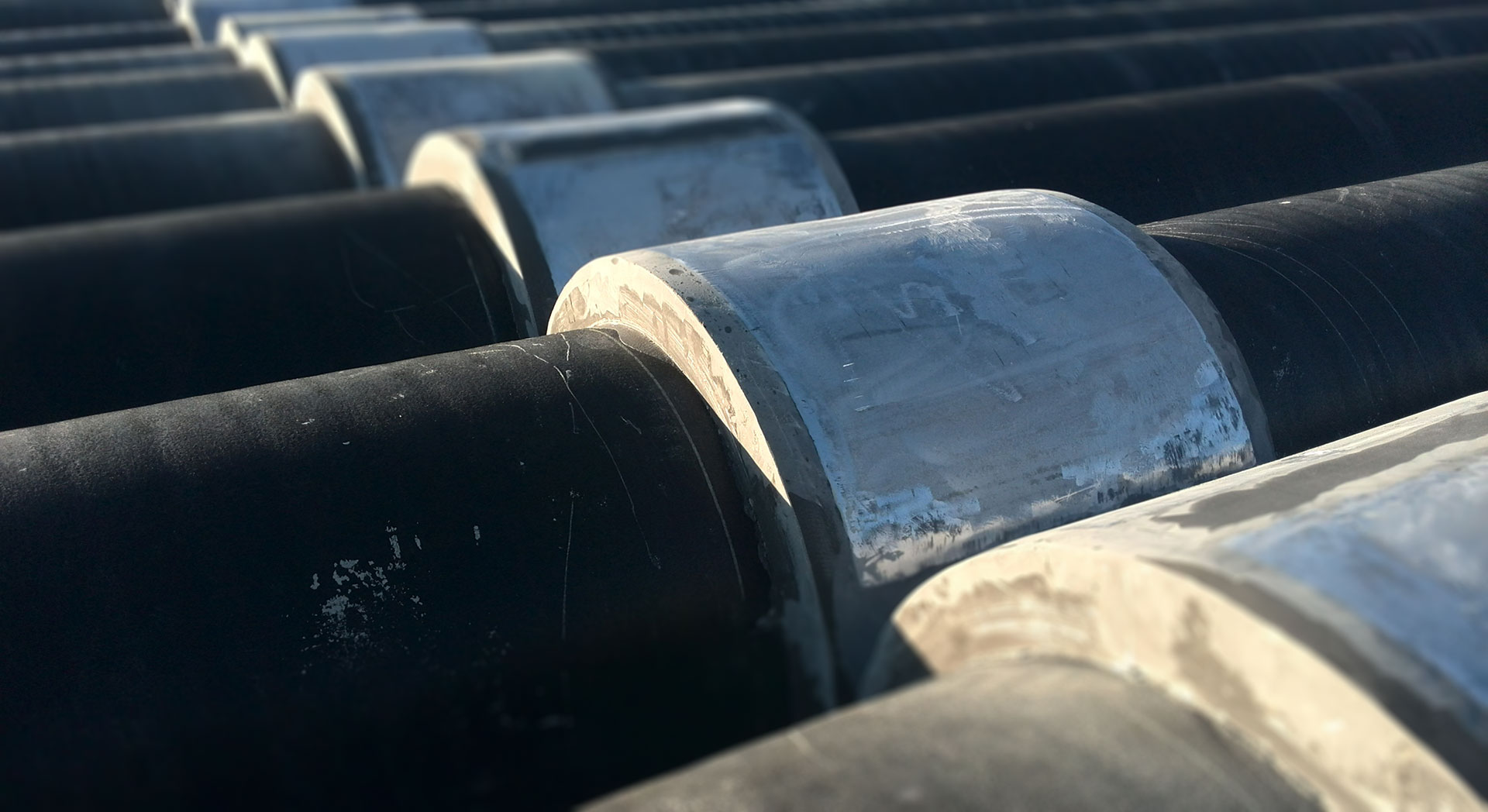 Offshore Pipelines
Offshore Pipelines
We are a leading player in the Offshore market being one of the few Companies which can carry out the CWC overweighting of the pipelines by impingement. The experiences racked up over the years completing different Projects, allow us to support the Customer in controlling the overweighting process guaranteeing high quality and substantial reliability, combined with the application of an efficient anticorrosion coating according to the best international Standards and to customer’s requirements, focusing in a technical- operational flexibility viewpoint. On high budget Projects, we can relocate our plants in order to carry out the production on site.
CONCRETE OVERWEIGHTING

The concrete weighing of the pipes (CWC) is a very high thickness overcoating in reinforced concrete tight-fitting to the pipes.
CWC is designed to ensure offshore pipelines a controlled weight in order to sink them and keep them on the sea bed with an high mechanic protection against possible impact with fishing nets and anchors. The weight is designed taking into account Archimedes’ thrust, marine streams, empty pipe condition, the desired size, the logistic and is checked for every single pipe.
SIZE RANGE
CWC diam. 6” (168.3 mm) up to diam. 64” (1524.0 mm) Pipe length from 9.0m to 13,5 m CWC thickness: 35 ÷ 150 mm (typical 60-120 mm) CWC density :: 2200 ÷ 3400 kg/m3 (typical 3040 kg/m3) Usual Negative Buoyancy : 50 ÷600 kg/m (typical 200-300 kg/m)
Read more
+Read less
XIN-DEPTH ANALYSES
CWC is a circular coating adhesive to the pipe, typically with a thickness from 40 to 120 mm. It’s made of a special high-density cement mortar, with heavy iron-oxide aggregates. It’s armoured with electro-welded, galvanized wire mesh, wrapped around the pipe inside the mortar wrap, with 1, 2 or 3 layers according to the design specifications. The CWC is applied on the coating (3LPE, 3LPP, FBE, asphalt) of the pipe. Industrially applied CWC is the exclusive method of overweighting international gas and oil transport Projects crossing the seas, it’s nowadays beneficially applied for river crossing, sea draining, offshore potable or waste water pipelines.
Read more
+Read less
XReference List

Project NCOC
- Kashagan Field Development Project - KAZHAKSTAN 76,5 Km
Km 76

Project API RAFFINERIA
- API Raffineria Sealine Isle - ITALIA 14,5 Km
Km 14

Project INAGIP
- INAGIP Ivana Field
Km 144

Project ENI - SAIPEM
- Fauzia & Elettra sealine - ITALY 19,2 Km
- Armida Garibaldi Guendalina sealine - ITALY 48 Km
- Annamaria Field Development Project - ITALY 76,8 Km
- Green Stream Project - ITALY/LIBYA 520 Km
Km 663

Project ILVA SPA
- La Rabida Refinery Sealine Project - SPAIN 5,8 km
- LNG Adriatic terminal (Snamprogetti-Exxonmobil) - ITALY 39,6 Km
- Caspian Pipeline Consortium (Saipem-Chevron) - CASPIAN SEA 5 Km
- OLT Off-Shore Lng Toscana Gas Terminal/Snam Rete Gas - ITALY 29,3 Km
- Sealine for Zuetitina Oil Company - LIBYA 4,5 Km
Km 82

Project ENI SPA / AGIP DIVISION
- CALIPSO SEALINE PROJECT - Italia 3'' - 12'' 52,6 Km
- NAOMI - PANDORA - ITALIA 3”-20” 40,5 Km
Km 92
ACTIVE PROTECTION (CATHODIC PROTECTION) – OFFSHORE SACRIFICIAL ANODES

In order to enhance the passive protection of the pipelines, achieved through the crucial anti-corrosion coatings, one should make use of the cathodic protection (or active protection).
Active protection is achieved by sending an electric current (protection current) to the metal of the pipe so to refill the electrons taken away from the corrosion process (corrosion current), thus stopping the corrosion phenomena.
The protection current may be imposed through power generators electrically connected to the pipes where possible (typically in on-shore projects) or can be achieved through sacrificial anodes welded on the pipes (typically in off-shore projects).
The sacrificial anode, normally made of Aluminium, (possibly also of Zinc/Magnesium) and generally in the form of two-pieces bracelet, is firmly fixed on the coated pipes and electrically connected through wires. For electro-chemical reasons depending on the different electro-negativity of FE and AL, the corrosion is concentrated in full on the sacrificial anode which creates the protection current and is gradually consumed.
The cathodic protection life span depends on the anodes weight compared to the pipeline weight and on electrical factors and manufacturing technique and is normally calculated so to match the standard life span of the pipelines.
Anodes can, anyway, be replaced by suitable means.
RGS has a wide experience in purchasing and setting up sacrificial anodes in offshore pipelines, of proven quality and reliability. Anodes set up is combined with the industrial process of concrete overweighting of the pipes in a way to enclose the sacrificial anodes in the mortar, thus resulting in a whole cylindrical body, easily manageable during the pipe laying operations.


